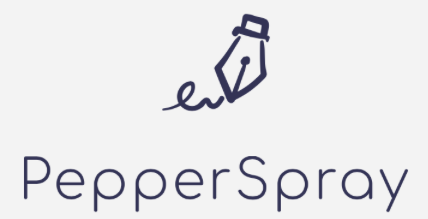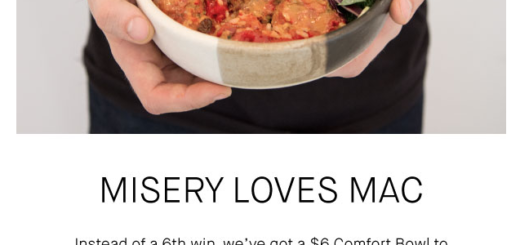Perspectives from the Driver’s Seat of Uber (Part 3 of 3)
NOTE: If you are looking for an abridged version written by a professional, see Scott Kirsner’s story on boston.com.
———-
UBER LESSONS LEARNED & RETIREMENT
As I wrap up my UberX experience, my ‘lessons learned’ can be boiled down to four main topics: earnings, leveraging existing skills, performance reviews, and culture.
1) UberX Driver Earnings
Let’s get the most basic question out of the way. What does an UberX driver earn?
In my first 53 rides, I drove 154 miles over the course of 10.35 “ride

r-in-vehicle” hours and earned $664.24. If it weren’t for that small detail of “dead time” between rides, and operating costs, this would be an incredibly lucrative job, averaging over $60/driving hour.
For me, my time with UberX has been more of an experiment (and a commitment to my friend Shabih) and not a put-food-on-the-table position, so I work hard to minimize this dead time. While “online” with Uber, I am always on my way home from dropping the kids off at school, or from a meeting, or from completing a chore, so I am already out and about anyway. I have to get home. Now, if I happen to get intercepted with an Uber request along the way, terrific. If not, I arrive home and move on to the other things in my life (like “what’s next” for my career!?) and don’t think a thing of it. I realize mine is not the average UberX driver mindset.
When I factor in all dead time, I earned exactly $29.98 per hour, having spent 21.49 hours in my vehicle total. To be clear, this is income only. It includes no expenses other than Uber’s 20% cut. Like most jobs, every driver has a different set of circumstances that leads to a wide range of expenses, like income taxes, car payments, insurance rates, gas mileage, car wash, etc. My point here is to point out that in my first 53 rides, I grossed $29.98 per hour. It didn’t always feel like it was adding up from ride to ride, but looking back at the end of most Ubering sessions, it did.
Most people who work full-time hourly positions in restaurants or retail shops don’t earn a livable wage because they are either underpaid per hour and/or aren’t permitted to work more than 40 hours per week. I can’t help but think that adding a part-time, highly flexible gig with Uber or a similar outfit could make a huge impact to them, and be far superior than trying to juggle a “real” 2nd job that will again underpay per hour and demand yet another rigid schedule. Focus on the “real” but underpaying job for upward mobility and development purposes, and do Uber as an income kicker, with the understanding there are generally no real prospects for upward mobility. Of course there’s the minor nuisance of needing a driver’s license and of either owning a 2008 or newer car or knowing someone who will sponsor you with their car. But if it can be done, driving for Uber can very efficiently and lucratively fill idle time between “real” job shifts and bridge the income gaps for many.
If any of you reading by chance want an UberX sponsor and have amazing hospitality running through your veins, give me a call. I might be interested 😉
2) Leveraging What People Already Know How To Do
I used to think that Boloco’s 6-week training program for new team members was respectable. One time I heard a competitor had an 8-week program and I pushed our team to get to that level. More training meant better service, happier guests, more sales, higher profits. Right? Not necessarily, as it turns out.
Uber’s training program lasted not six to eight weeks, not one week, not even a day… no, it was one hour. I’ve never run across a more efficient training program, including the time when I learned how to sell Cutco knives back in 1990 (cut the rope and you sell the knife; cut the penny and you sell the scissors; repeat). Cynics will point to their last poor Uber trip as evidence that this amount of training isn’t adequate. But you could also point to your last poor fast food experience to argue that the multi-week training program isn’t so effective either – not to mention the difference in investment in an employee with 1 hour versus 6 weeks of training (plus, the fast food world averages turnover greater than 100%).
The obvious fact of the matter is that restaurants can’t do it in an hour – and for a simple reason. Most people didn’t learn to make a “globally inspired” burrito as a teenager. If you were like me, you were counting down the days before you were permitted to drive – starting at age 5. And when you did get your license, you drove as often as you could. And you wanted to be good at it. By definition, any applicant to Uber has a valid driver’s license and therefore, Uber can leverage the government’s systems to ensure that this person already knows how to safely perform the main skill required to succeed as an Uber driver. Remember, nearly everyone believes they are in the top 25% of all drivers in terms of competency.
When any business I meet nowadays talks about “Ubering” an industry (which happens nearly every day lately), I make sure to point out that to truly “Uber a business” means that you must leverage something your eventual employees already know how to do. That doesn’t mean that you can’t successfully apply other aspects of Uber’s model to other businesses, but one of the key reasons Uber is so good is that 99% of their new “employees” are already well trained on the core skill required to succeed.
3) Disciplined Performance Metrics and Ratings
Where Uber also excels and other businesses generally don’t – but could – is in one of the most loathed activities in business: ongoing performance appraisals.
Performance reviews are especially poor in the restaurant business. Many food service employees will tell stories of going months and even a year after being hired and trained without a real performance review, missing out on pointers on which to improve, or pats on the back for a job well done. They rarely know where they stand, and frankly, neither do their managers.
Uber drivers? They get evaluated by every single passenger during every single shift with no exceptions. These are customers who get to see the experience the driver provides from start to finish. While Uber quietly lets drivers know that they will turn a blind eye to a driver’s first 40 rides, after that you better be above a 4.5 (that’s in Boston; other cities vary apparently). If you’re not, you will no longer be eligible to continue as an Uber driver. There will be no excuses, no stories, and no crazy customer tales that will get them to make an exception. Why? Because they have enough evidence that it can be done at 4.5 and above. A lot of evidence. As an Uber customer, you can’t enjoy another Uber experience without rating your prior ride (and your driver can’t accept another customer until he rates you as a passenger!) Those ratings stack up quickly, and even small ratings differences eventually differentiate great drivers from mediocre drivers with statistical significance (I still haven’t figured out what Uber will do with driver ratings of customers, but I’m sure it will be interesting!)
In restaurants and so many other traditional businesses, we spend too much of our time listening to stories and excuses. Stories that usually leave a management team shaking their heads in bewilderment, and literally saying “you can’t make this sh*t up.” Stories that bring our dreams and visions of making a difference, of building a meaningful business and brand, to a screeching halt – way too often. At Uber, there are no stories.
Imagine for a second that Uber didn’t have a ratings system and instead waited to conduct a thorough review of each driver every six months. Frankly, it’s impossible to imagine. Uber wouldn’t be Uber. Neither Uber managers nor restaurant managers can possibly recall enough about each employee/driver over a multi-month period to give a fair assessment of each person relative to his/her peers. Instead managers in charge of infrequent reviews rely heavily on recent memory and personal relationships to provide feedback and determine wage increases. And in the “let’s be 100% honest” category…managers mostly just get the review done as quickly as possible to check the administrative box that reviews are complete, so they can move back to the day-to-day fray. Nobody benefits – not the company, not the team member being evaluated, and not the customer.
You can be assured that frequent ratings both internally & externally will be part of anything I do next.
4) Uber’s Lack of Culture Doesn’t Seem to Matter… Yet
The culture of Uber from the perspective of its drivers ranges from non-existent to cold. As this realization has grown over the weeks, there have been moments of let down as a result, just as any brand that one holds in high regard tends to disappoint once we get to know its inner workings too well (just ask the countless people who so badly wanted to work for Boloco only to find out that its not all roses on the inside).
I’ve been an UberX or UberBlack customer about 175 times in the past two years, which has cost me nearly $6,000. I have been a good customer (I think) and at one time loved everything about Uber as a customer. In addition, as CEO of Boloco, I had enthusiastically engaged with the local Boston Uber team when supporting Uber events and marketing campaigns with burritos in 2012 and 2013. We had talked about doing more and it was exciting to work together. They were a young and energetic team.
But as an UberX driver, when I’ve reached out to that very same Boston-based Uber team I’ve received an arms-length, corporate response to my questions or comments. When I tried to connect more deeply (let’s grab coffee, for e.g.), frankly to share my experiences having seen both sides of company, I received no response whatsoever.
As I’ve thought about it further, with help from dozens of Uber drivers with whom I’ve struck up conversations, it’s clear to me now that Uber treats its drivers very similarly to how Boloco treats its disposable, not hugely valuable, equipment. We drivers provide our value by functioning correctly. If we function well, terrific. When we don’t function correctly, however, no maintenance or repair procedures commence. We are simply discarded for another similar piece of “equipment.” At first I laughed when Uber told us in that hour-long training session not to try to call them if there were issues, but now I know it’s a critical part of the business model. Indeed, this removal of real human contact has allowed them to scale so rapidly that they are hiring in cities I’ve barely heard of — see Uber’s “now hiring” website for a peek at what the future brings. It’s not just impressive, it’s mind boggling.
Lyft, one of Uber’s chief competitors, on the other hand, is fully engaged in building a unique culture. They require drivers to affix giant pink moustaches to their cars and passengers usually sit in the front seat and receive a fist pump when they first enter. Drivers have monthly get-togethers and the on-boarding process is very, very personal. You even get invited onto a “secret” Facebook page for New Lyft Drivers where within hours of accepting I noted the page was full of little questions, complaints, and things that honestly remind me of HR in the restaurant business. While that last part concerns me in terms of scaling, the bottom line is that Lyft celebrates its customers andits drivers. Lyft is very human.
But will these attempts at building a human brand matter? Can Lyft compete with Uber over the long haul? I can’t tell yet. Uber’s no-nonsense style has integrity in that it just works. There’s no wasted time. It’s all business, all the time. Uber has a far better reputation for being appropriate for Gen X/Y and older as well as corporate users – a business person headed to the airport in a random city would likely use Uber because its reputation is ‘black car’ even with UberX pricing options. When I first heard about Lyft, I immediately wanted them to win because they are clearly trying harder to differentiate as the #2 player. They care about people and humanity. But even people in their 20s tell me they’ve refused to use Lyft because they think the moustaches are “creepy” or don’t want to fist bump, and judge the whole service based on that one feature.
Maybe the strategy to have the best of both worlds is the fairly obvious solution… Uber buys Lyft and in addition to “UberX”, “Black” and “SUV”, they add “Pink” to its list of service options. Buy the culture of Lyft, and let them continue operating as they do. Problem solved… now if only Travis, Uber’s CEO, would respond to my numerous emails so I could share this gem of an idea with him!
OFFICIALLY ANNOUNCING MY RETIREMENT
Despite the ribbing I’ve received from friends and foes alike over the last few months, I’ll never regret jumping in head first, earning Shabih his $250 referral fee, seeing a new perspective on humanity and experiencing the “inside” of a fascinating business model.
So that’s it for Uber and me. I proudly conclude my livery tenure with a rating of 4.89. To those of you who I had the pleasure of driving, thank you for giving me something to focus on as I transition to the next part of my “career”, whatever that may end up being 🙂




Recent Comments